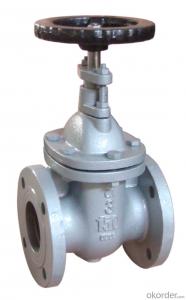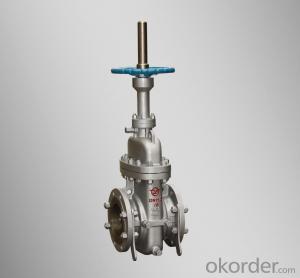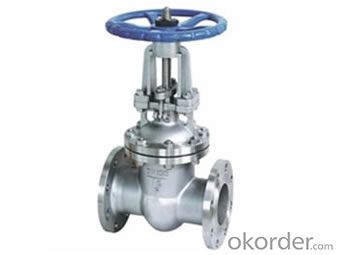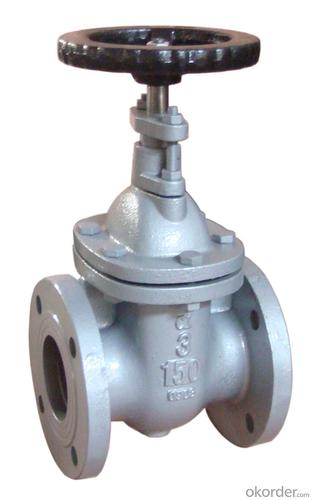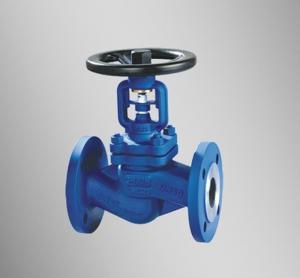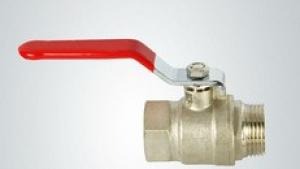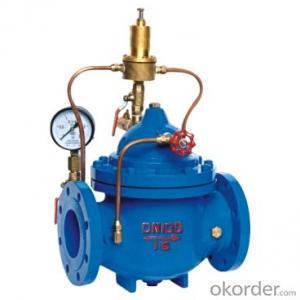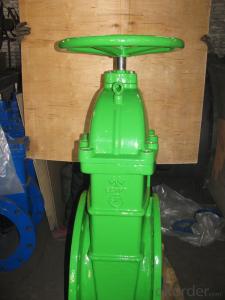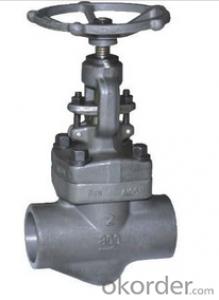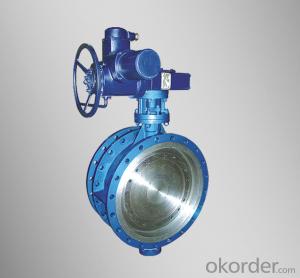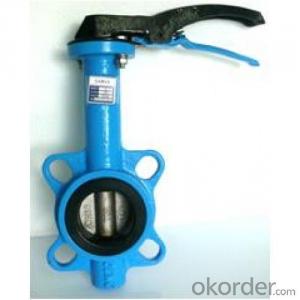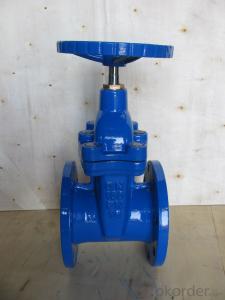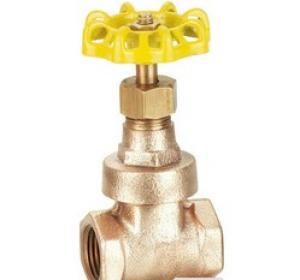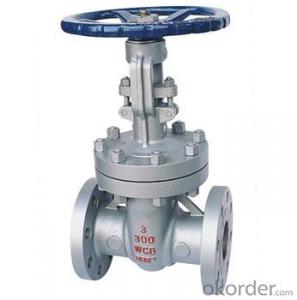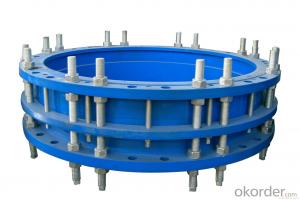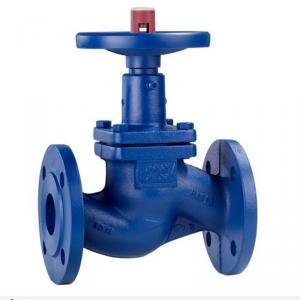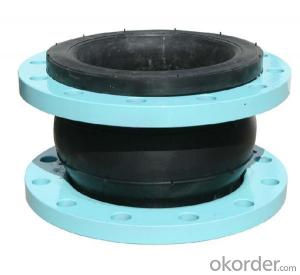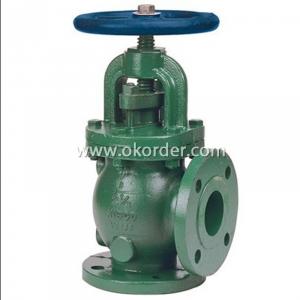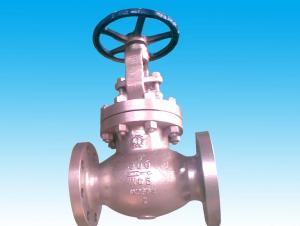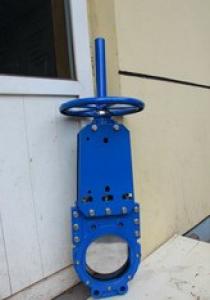Gate Valve with Good Quality on Sale DIN3352
- Loading Port:
- Tianjin
- Payment Terms:
- TT OR LC
- Min Order Qty:
- 100 pc
- Supply Capability:
- 1000 pc/month
OKorder Service Pledge
OKorder Financial Service
You Might Also Like
1.Structure of Gate Valve Description:
A gate valve, also known as a sluice valve, is a valve that opens by lifting a round or rectangular gate/wedge out of the path of the fluid. The distinct feature of a gate valve is the sealing surfaces between the gate and seats are planar, so gate valves are often used when a straight-line flow of fluid and minimum restriction is desired. The gate faces can form a wedge shape or they can be parallel. Gate valves are primarily used to permit or prevent the flow of liquids, but typical gate valves shouldn't be used for regulating flow, unless they are specifically designed for that purpose. Because of their ability to cut through liquids, gate valves are often used in the petroleum industry. For extremely thick fluids, a specialty valve often known as a knife valve is used to cut through the liquid. On opening the gate valve, the flow path is enlarged in a highly nonlinear manner with respect to percent of opening. This means that flow rate does not change evenly with stem travel. Also, a partially open gate disk tends to vibrate from the fluid flow. Most of the flow change occurs near shutoff with a relatively high fluid velocity causing disk and seat wear and eventual leakage if used to regulate flow. Typical gate valves are designed to be fully opened or closed.When fully open, the typical gate valve has no obstruction in the flow path, resulting in very low friction loss.
2. Main Features of the Gate Valve:
• Valve body cavity using non-toxic epoxy resin,both inside and outside flashboard completely is coated with rubber
• Free of water pollution
• High manufacturing accuracy
• High strength
• Environmental protection and energy saving
• Good visual effect
3. Images
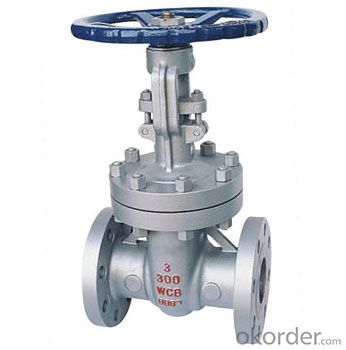
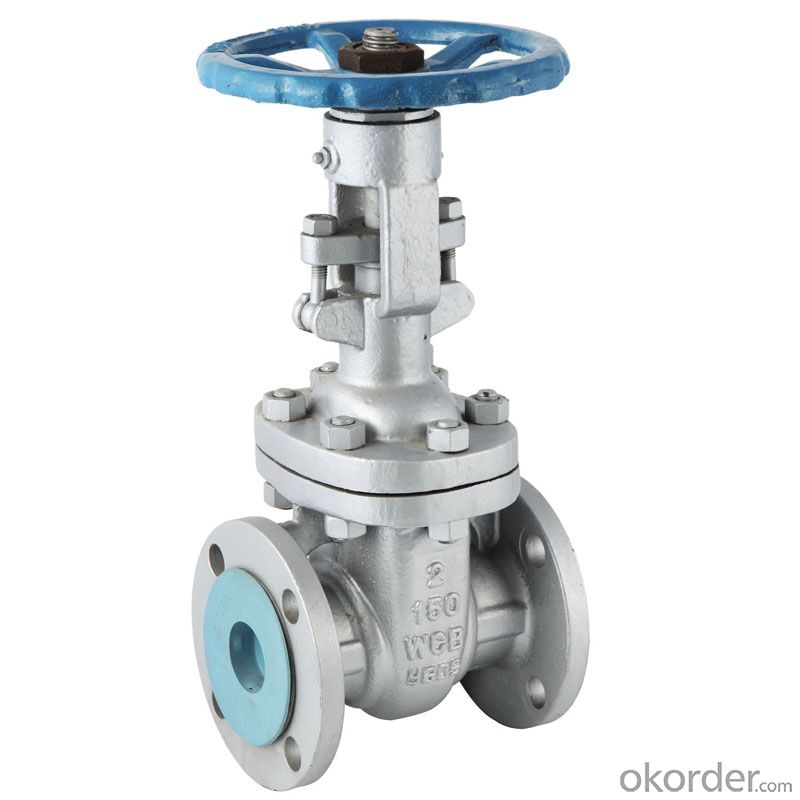
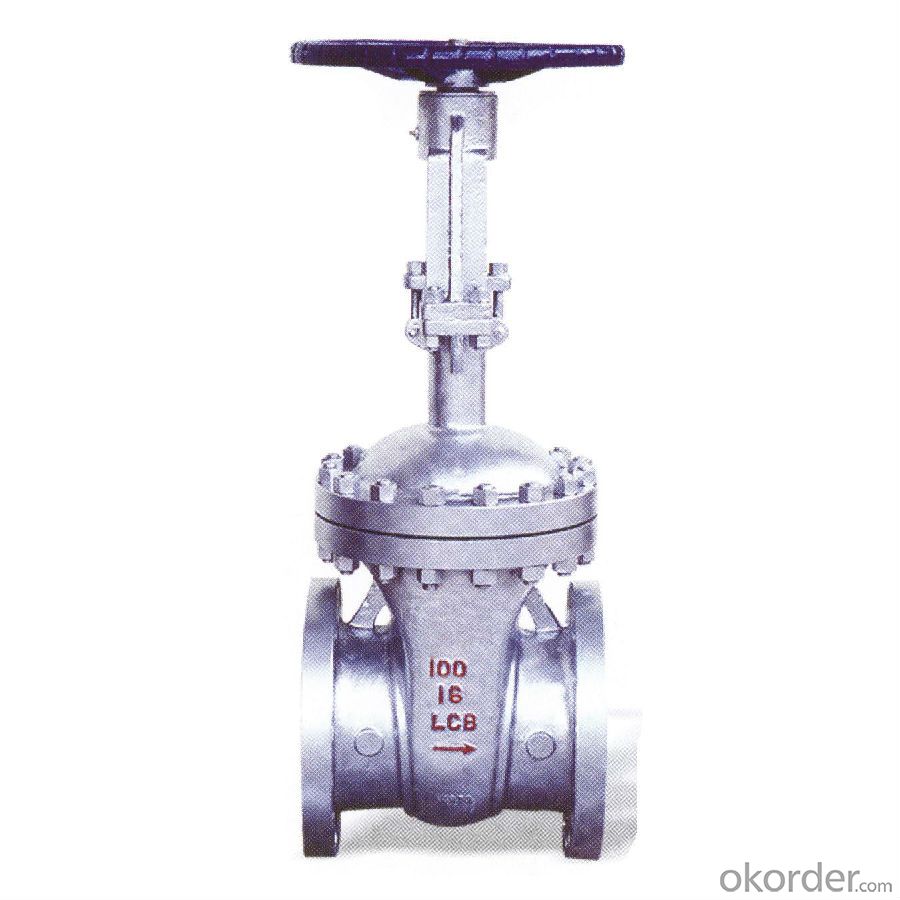
4.FAQ
1. What's are the characteristics of gate valve?
The distinct feature of a gate valve is the sealing surfaces between the gate and seats are planar, so gate valves are often used when a straight-line flow of fluid and minimum restriction is desired. The gate faces can form a wedge shape or they can be parallel.
2. What is the work principle of gate valve ?
The gate faces can form a wedge shape or they can be parallel. Gate valves are primarily used to permit or prevent the flow of liquids, but typical gate valves shouldn't be used for regulating flow, unless they are specifically designed for that purpose. Because of their ability to cut through liquids, gate valves are often used in the petroleum industry.
3. What is the structure?
Bonnets provide leakproof closure for the valve body. Gate valves may have a screw-in, union, or bolted bonnet. Screw-in bonnet is the simplest, offering a durable, pressure-tight seal. Union bonnet is suitable for applications requiring frequent inspection and cleaning. It also gives the body added strength. Bolted bonnet is used for larger valves and higher pressure applications.
- Q: High and low pressure valve is how to distinguish?
- Ultra high pressure valve nominal pressure PN = 100MPa; high pressure valve nominal pressure PN10.0MPa ~ 80.0MPa; medium pressure valve, nominal pressure of PN2.5MPa ~ 6.4MPa; low pressure valve, nominal pressure PN is less than or equal to 1.6MPa
- Q: What is a lift rod valve?
- The valve stem and valve plate are relatively fixed, and the valve stem rises up when the valve plate is raised
- Q: Which industries need valves?
- 3., the other side of energy development is energy conservation, so from the perspective of energy conservation, it is necessary to develop steam traps, and to sub critical and supercritical high parameter development;4., the construction of power stations to large-scale development, so the use of large diameter and high pressure safety valve and relief valve, but also need to quickly open and close the valve;5., for the needs of complete sets of projects, the supply of valves from a single species to more varieties and specifications. The valve required for an engineering project is growing with the full availability of a valve manufacturer.In the next few years, the overall trend in demand for the valve for the upward trend, the valve of this large volume of industrial supplies, its demand in steady growth. Among them, the demand for a larger number of valves in turn are: ball valve (15.5%), cut-off valve (12.9%), safety valve (12.5%), gate valve (12.5%), butterfly valve (10.6%), regulating valve (8%) and check valve (6.1%).
- Q: What are the specifications of the valves PN25, DN50?
- PN25 - nominal pressure 25bar (25kgf/cm -)DN50 - nominal diameter is 50mm (2)
- Q: Valve difference
- Valve difference, or you should ask the classification of valves, valve classification, there are several sub methods, some according to the model, and some are by use, then each kind of valve is divided into several categories and models. Take the trap for example, it is a kind of valve, and then it is divided into steam traps, air traps, float traps, and so on. If you really want to know the difference between the valve you search the Internet under the classification of the valve, there are a lot of articles, or you directly to the trap inside www.ssfmsh find an article on the valve type article, can not give you a specific address, is not allowed here. You work hard, go find kazakhstan. I hope my answer will be helpful to you.
- Q: According to the original valve installed on it, but never demolished, I am afraid to force over, will not be broken? The old valve, that part of the remaining three tubes tight.
- Look, the valve you bought looks like PVC hot melt.. If the old valve and the elbow must be rejected with a hacksaw, hot melt and buy a new elbow and PVC section pipe for hot melt machine welding. From the picture didn't see traces of the thread,
- Q: I'm going to put a solar energy and an electric water heater installed in the same hot water pipe, a valve, a valve open and close the valve B and vice versa the installation of solar and electric water heater, there can be no linkage valve?
- In industry, you say this, such as using two butterfly linkage and composition of the three-way valve to use. But civilian should be few, demand is very little ah. It is estimated that you can only install two valves and then use both hands at the same time to perform linkage.
- Q: Can the angle valve of York central air conditioner be replaced by other valves?
- Definitely. But I want you to tell me what you're doing, or give me a picture. I can give you some advice
- Q: Valve legend
- This should be part of the thermodynamic device that represents the gate valve or butterfly valve
- Q: Is there any difference between the valve and the water valve?
- There is no difference between the low pressure lubricating oil pump, as long as the excuse right on the line, not to pressure, design pressure ball valve common does not exceed 3MP, the maximum pressure of only small gear pump vane pump is 2.5MP, the other piston pump, gear pump, the pressure is above 6.3MP. Certainly not. Unless using high pressure water pipe valve.
Send your message to us
Gate Valve with Good Quality on Sale DIN3352
- Loading Port:
- Tianjin
- Payment Terms:
- TT OR LC
- Min Order Qty:
- 100 pc
- Supply Capability:
- 1000 pc/month
OKorder Service Pledge
OKorder Financial Service
Similar products
Hot products
Hot Searches

